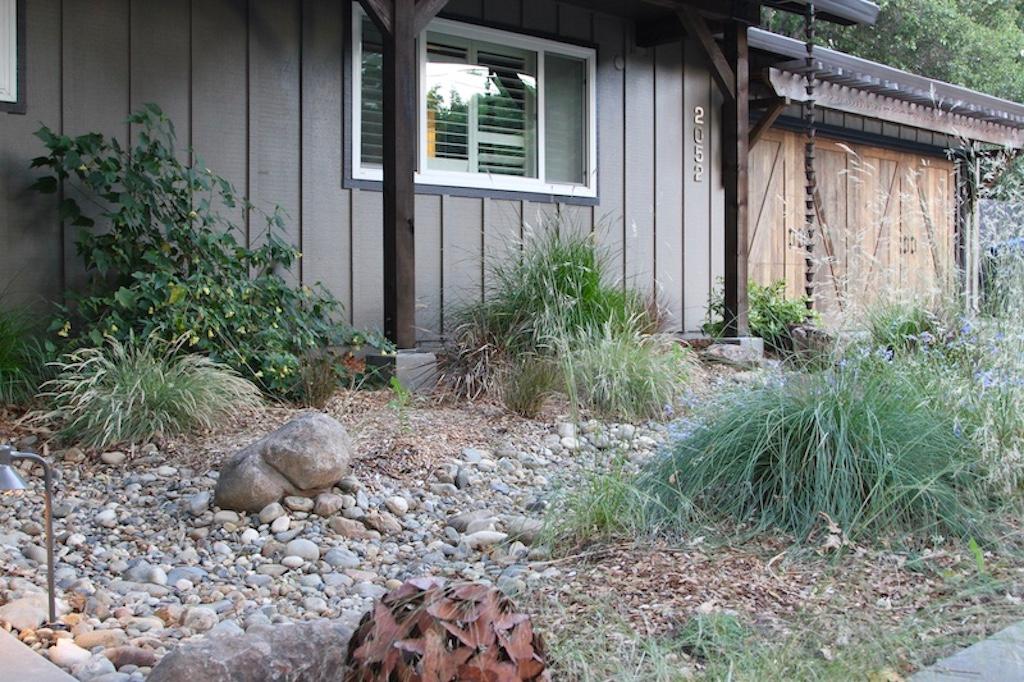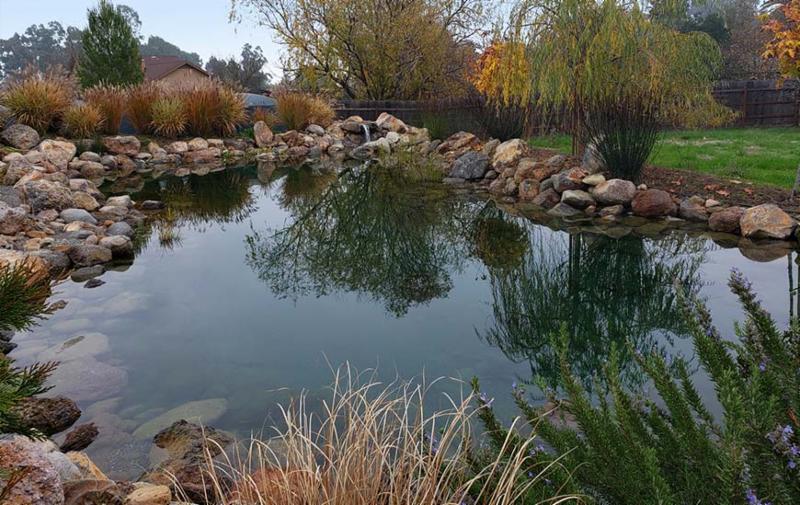We’re thrilled to see so much rain falling on our drought-parched North Bay. Yet in spite of the wet start to the new year, a changing climate means that California will continue to cycle in and out of droughts, sometimes with catastrophic flooding in between. How do we use the winter’s abundance far into the dry season? How can we cleanse and restore the water table while reducing flooding?
Part of the answers lie in rain gardens and earthworks. Often described as passive systems for rainwater collection and water table preservation, these methods use the land and vegetation to collect and slowly filter rainwater back into the earth.
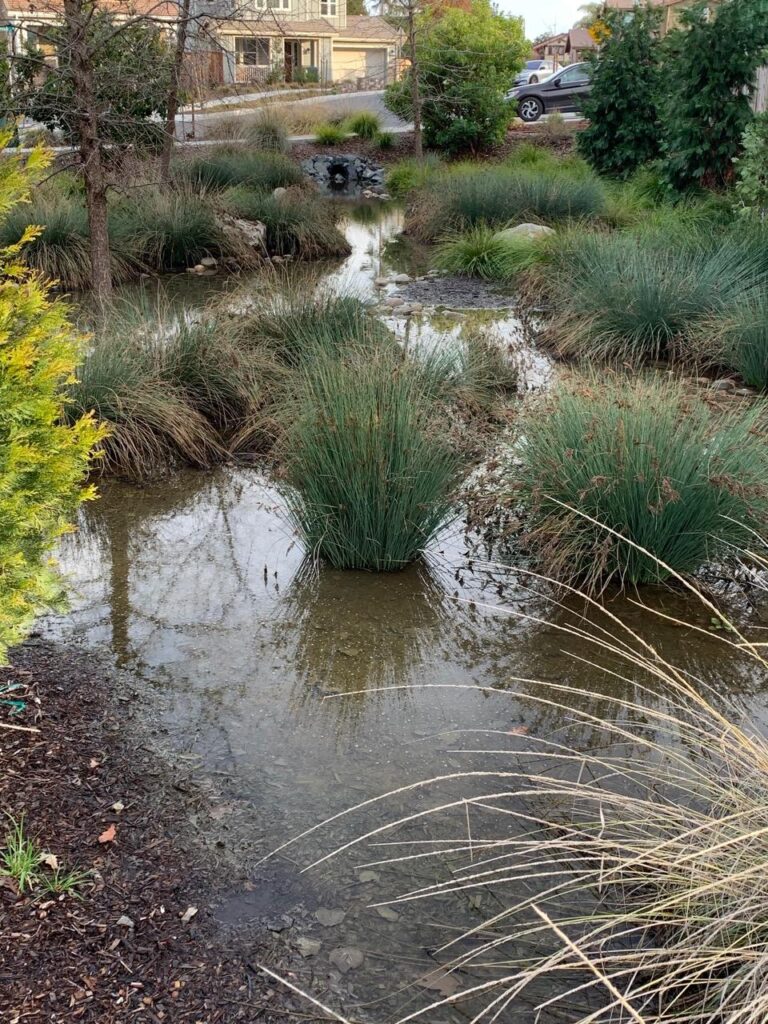
While the term rain garden may conjure up images of ponds and waterfalls, a rain garden is actually a garden that is designed to capture run-off from impervious surfaces such as parking lots, rooftops and patios, and filter contaminants through its soil and plantings. A rain garden can be a beautiful addition to a landscape with many benefits: it cuts down on the need for irrigation, helps raise the aquifer and reduces the amount of pollutants reaching creeks, streams and the bay.
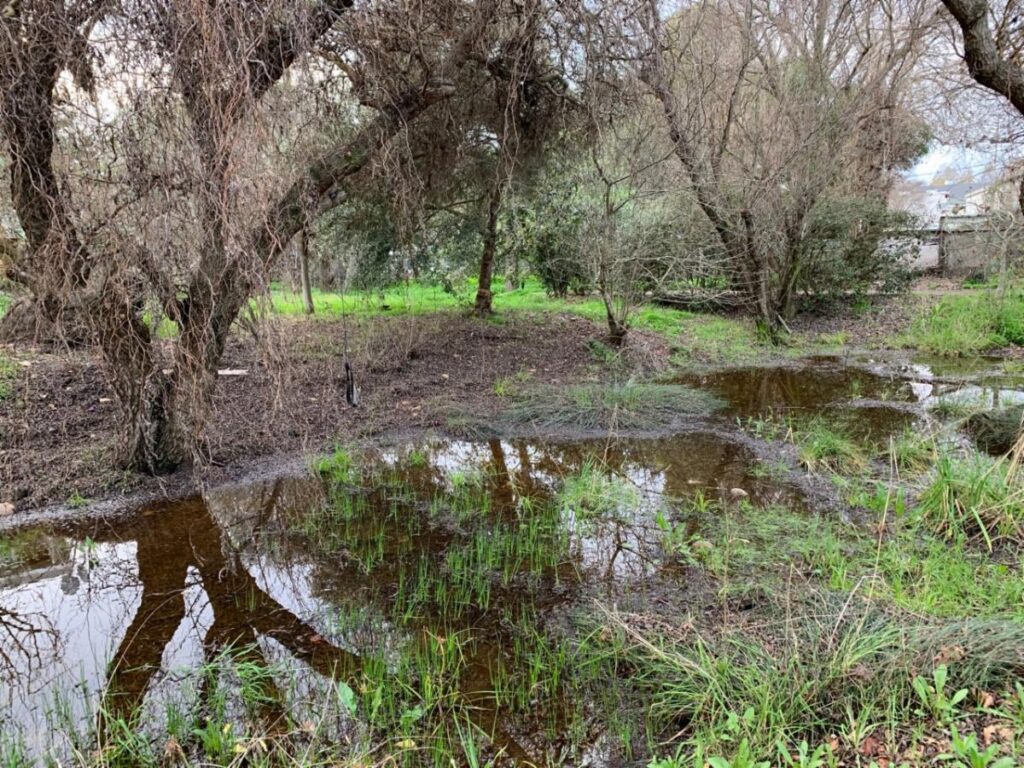
Earthworks is an ancient strategy of directing and collecting rainwater through the topography of the soil. Earthworks incorporates the use of swales, berms and basins, contour plantings and vernal ponds to slow water, spread it out and sink it into the soil. It can be the cheapest and most effective way to slash water bills, reduce the use of nonrenewable water supplies, decrease down-slope flooding, and improve water quality.
We are just completing a residential project in San Rafael where rainwater capture and collection are primary features. The modestly sized neighborhood home includes tanks to hold 4,000 gallons of rainwater, and four different rain gardens in the front and back yards, fed by downspouts and gutters. This allows the overflow water to penetrate and filter through water-loving plants and hold moisture in the soil while slowly replenishing the aquifer.
We estimate these passive rain gardens alone can capture and filter approximately 1,000 gallons of water per storm. And by vegetating the property with native, drought-tolerant plants, and capturing all that rain, our client is foregoing an irrigation system altogether!
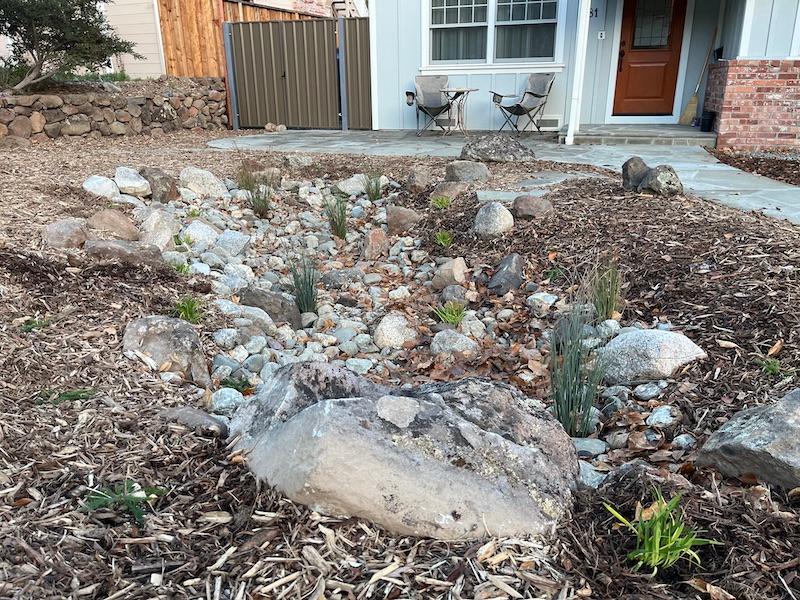
This newly planted San Rafael rain garden will fill in with native water-loving plants (see below) to help soak up the rain and filter it slowly back into the water table. While we were building it, the rocks and new plants were already attracting birds and butterflies—before any rain had started to fall.
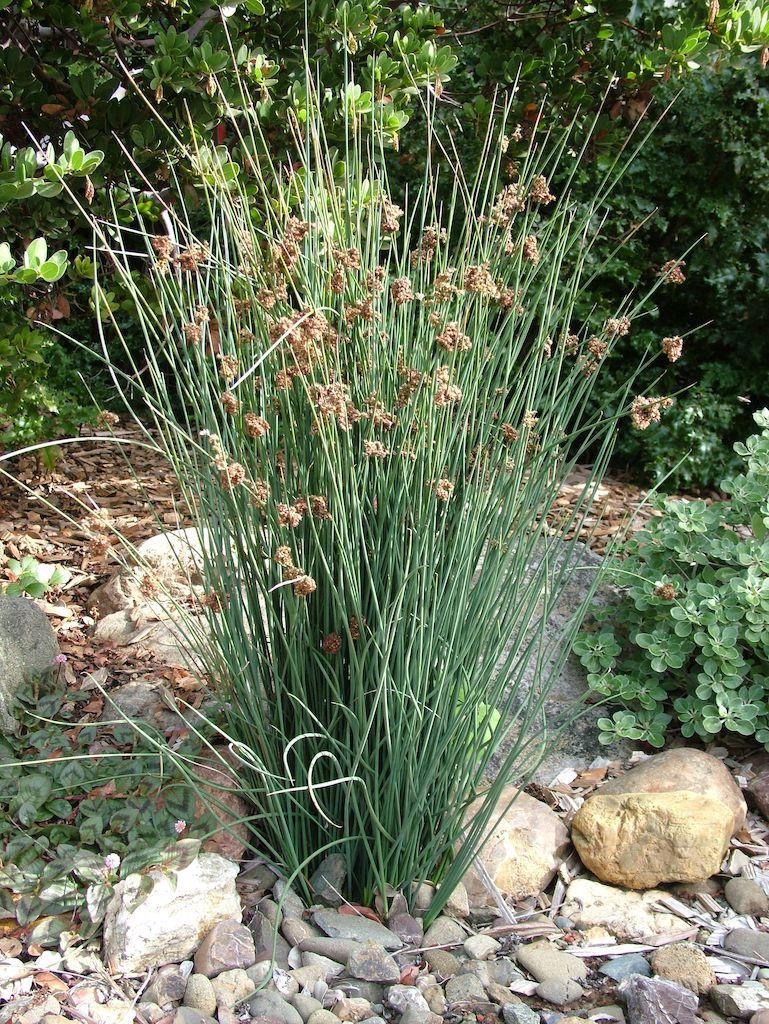
California grey rush (Juncus patens)

Blue-eyed grass (Sisyrinchium bellum)
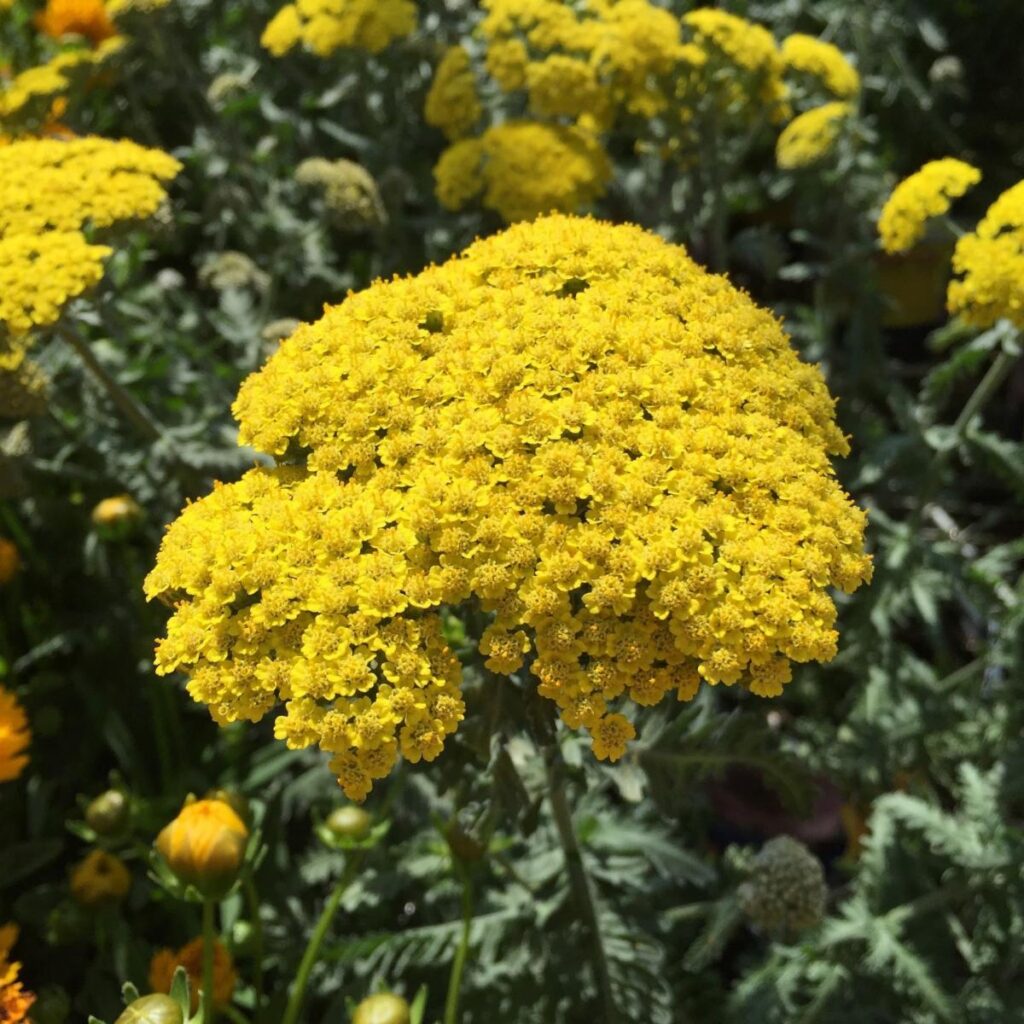
California native yarrow (Achillen millefolium)
Dig Deeper:
- As many of you know, one of our water conservation heroes is Brad Lancaster, who lives and practices his expertise in one of the driest parts of the country, Tucson, AZ. Click here for his brief explanation of passive water harvesting.
- This short video demonstrates the construction of a rain garden on the campus of Santa Barbara City College, an area with even less rainfall than the North Bay.
- And this just in: Our very own Patrick Picard has been invited to speak at the 7th Biennial Russian River Watershed Event for landscape professionals on Tuesday, February 7, 8am – 12pm. This event, “The Garden Sink: Practical Practices to Capture Rainwater and Carbon in an Urban Setting” also features the above-mentioned Brad Lancaster. Patrick will be representing the contractor/design-builder perspective, and will highlight the work of our Equinox H2O division. Click here for details and registration.
Don’t go another wet season watching all your rainwater wash down the storm drain! Our water conservation division, Equinox H2O, is ready to design and build a regenerative landscape that captures the rain, returns it to the earth, and irrigates your plants. Call us at 707-789-9786.
